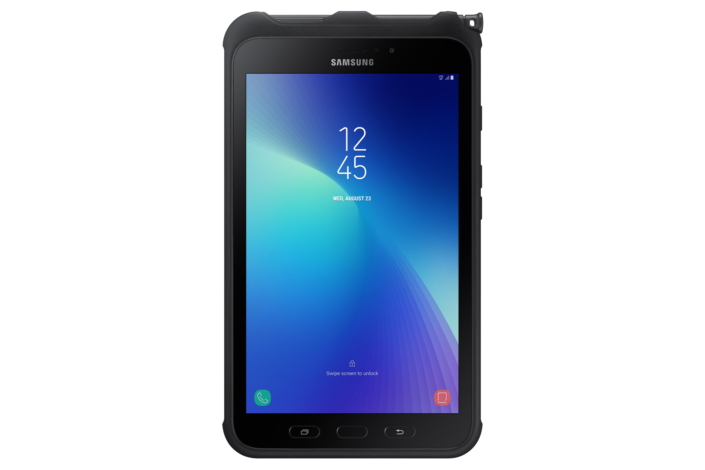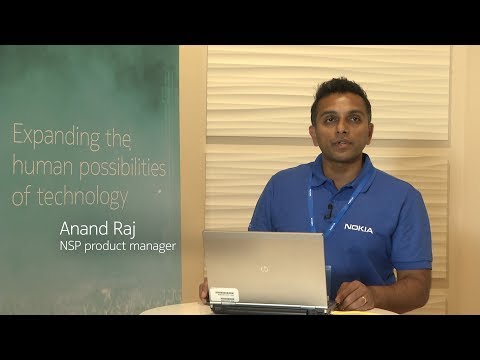
Samsung Electronics today introduces the Galaxy Tab Active2, a new business-rugged tablet built for business through a customer-centric design inspired by professionals with the latest innovations from Samsung. The Galaxy Tab Active2 helps accelerate the digital transformation of industries among key verticals like transportation, public safety and manufacturing by offering a wider range of features such as biometrics integration, multi-window screens and S Pen capabilities that function in extreme working conditions, ultimately improving worker productivity and flexibility.
“The Samsung Galaxy Tab Active2 was built based on in-depth customer and partner feedback and has been carefully developed to create a whole new category of tablet for the global workforce,” said Suk-Jea Hahn, Executive Vice President of Samsung Electronics’ Global Mobile B2B Team. “We strategically worked to build a wider partner ecosystem for extended functionality through collaborations with leading industry players, such as IBM, ECOM Instruments, Gamber-Johnson, Ram®Mounts, iKey, Otterbox and Koamtac. With IBM Maximo, we are delighted to bring to Samsung, for the first time, industry leading asset management features for field workers to simplify their daily lives.”
Building a Partner Ecosystem with Industry Leaders
Samsung Mobile embraced an open approach with partners to expand the experience for the Galaxy Tab Active2 including working with IBM Maximo to integrate the capabilities of Asset Management and Work Management. By combining IBM’s advanced asset management capabilities with device features such as biometrics integration, multi-window screens and S Pen capabilities, tasks such as equipment inspection and maintenance will be easier and more efficient for workers, regardless of the complexity of the environment they are working in.
“With this collaboration, IBM Maximo and Samsung Mobile B2B are solving ever-changing business requirements for industrialized mobile devices and empowering field technicians with new tools designed to work where and how they do,” said Sanjay Brahmawar, general manager, IBM Watson IoT Sales. “Users will be able to conduct crucial on-premise analysis, such as updating work orders or counting inventory items, in an intuitive, friendly interface on a robust and reliable device.”
Additionally, the Galaxy Tab Active2 has professional-grade vehicle mounting options for commercial fleets and law enforcement through partnerships with Gamber-Johnson and Ram®Mounts. Other collaborations bring new features such as explosion protection for oil, gas, pharmaceutical and chemical industries with support from ECOM Instruments, portable barcode scanning from Koamtac, hand straps from Otterbox and rugged vehicle and portable keyboards from iKey.
Customer Inspired Innovation
The Samsung Galaxy Tab Active2 is MIL-STD-810 certified, ensuring that the tablet is durable enough to survive excessive pressure, temperatures, environments, vibration and drops. The Galaxy Tab Active2 offers business-rugged features such as a 1.2m anti-shock inbox protective cover, IP68 water and dust resistance and better display touch mode for gloved and wet touch. These features provide greater durability in extreme environments with a simple design and interface for one-handed input and holding.
Latest Innovations for Field Workers
The thin and light tablet in class designed specifically for worker ergonomics, Samsung’s latest tablet has features that expand the productivity tools for those on the job, including a new advanced and popular S Pen that brings precise input options with 4096 pressure level and air command feature. The S Pen also features IP68 water and dust resistance for use in outdoor environments, even during rain and wet conditions.
Using the improved 5MP camera with 8MP Auto Focus, business users will experience better quality photos for work purpose such as ID card and passport scanning. A new fingerprint scanner offers enhanced security authentication, and the facial recognition feature is a convenient option for unlocking the device using just one hand. When paired with new gyroscope and geomagnetic sensors, employees will also benefit from a wide range of augmented reality (AR) capabilities. AR can now be used with Galaxy Tab Active2 for employee training and customer support experiences allowing businesses to train employees in a realistic environment before ever reaching the job site. It also contains NFC feature.
The device also features LTE connectivity, easy and convenient power charging with efficient battery control of multiple devices and additional data signal pins for optional keyboard connection.
Security and Management Businesses Demand
The Samsung Galaxy Tab Active2 provides businesses with enhanced options for security, supported by the defense-grade Knox platform and convenient biometric authentication including a new fingerprint scanner offering improved security authentication and facial recognition for convenient hands-free access.
The Samsung Galaxy Tab Active2 will be available from October 2017 in select markets. For more information on the Galaxy Tab Active2 visit https://www.samsungmobilepress.com, news.samsung.com/galaxy or www.samsung.com/galaxy.
*All functionality, features, specifications and other product information provided in this document including, but not limited to, the benefits, design, pricing, components, performance, availability, and capabilities of the product are subject to change without notice or obligation.
Samsung Galaxy Tab Active2 Product Specifications
| DISPLAY |
8.0” WXGA TFT (1280×800) |
| CHIPSET |
Samsung Exynos 7870 |
| Octa-core 1.6GHz |
| LTE SUPPORT |
LTE Cat.6 (300Mbps) |
| MEMORY |
3GB + 16GB |
| microSD up to 256GB |
| CAMERA |
8.0MP AF + 5.0MP, Flash |
| PORT |
USB 2.0 Type C, Pogo Pin |
| SENSORS |
Accelerometer, Fingerprint Sensor, Gyro Sensor, Geomagnetic Sensor, Hall Sensor, Proximity Sensor, RGB Light Sensor |
| WIRELESS CONNECTIVITY |
Wi-Fi 802.11 a/b/g/n/ac (2.4GHz+5GHz)
Wi-Fi Direct, BT 4.2, NFC |
| GPS |
GPS + GLONASS |
| DIMENSION, WEIGHT |
127.6 x 214.7 x 9.9mm, 415g (Wi-Fi) / 419g (LTE) |
| BATTERY CAPACITY |
4,450mAh, User Replaceable |
| OS/UPGRADE |
Android 7.1 |
| Durability |
IP68 Water and Dust Resistance,
1.2m Anti-shock with inbox protective cover,
MIL-STD-810G |
| Pen |
S Pen (IP68 Certified, 4096 Pressure Level, Air Command) |
| Security |
Knox 2.8 |
Source: Samsung Mobile Blog
—
















